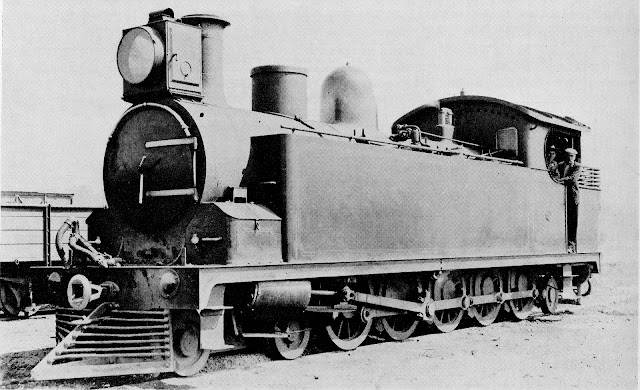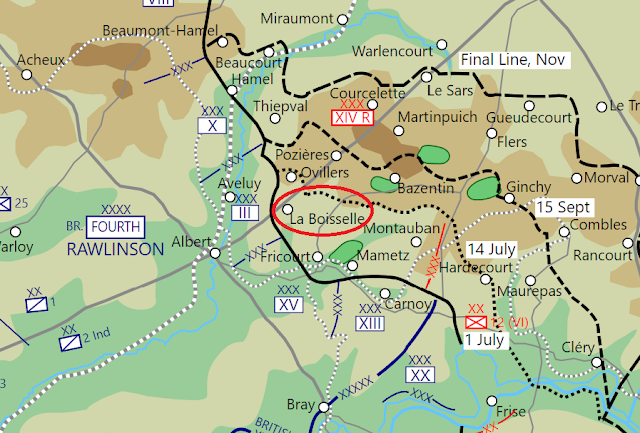Robert Robertson Reid
Thanks to Margaret for providing the photo above. I am indebted to Fettes School for providing access to photos available from their archive; thank you to Mr David McDowell for facilitating this but I understand the original source was Mr Charles Frater who arranged the photos and generously supplied them to the College.
Robert Robertson Reid was born on 9th May 1897 in Durban, Natal, South Africa. His father was George Whyte Reid, born in Glasgow but working as a locomotive inspector at the time. George was aged 54 when Robert was born, having been married once before to Janet Smith Fleming. He had two daughters Elizabeth and Anna, but his wife and his younger daughter died in 1881 and are buried in Inverness.
George, who came from a family of railwaymen (reference), went to work in South Africa in 1893 as locomotive inspector for Natal Government Railways.
Undated photo of George, Robert's father
He married Margaret Jane Robertson in Durban in July 1896; Robert was born ten months later. Clearly George's work exceeded what I might expect an inspector to do (note his middle name in the following is given as William, but it was definitely Whyte):
Click here for the rest of the article. And here is The Reid Tenwheeler:
For more detail, click here.
George retired in 1903 having kept the railway running through the Boer War as an important component of the British Government's efforts.
The family moved to Scotland and George bought a house in Bearsden that he called Inchanga, which is the name of a village with a railway viaduct and station in Natal; today 4 Boclair Road.
Three photos showing the station and staff, the station sign and the station (centre of photo) with the hotel on the hillside above.
Robert was aged 6, and started at Bearsden Public School where he impressed his teachers until 1909 (aged 12), then attended Fettes College in Edinburgh.
According to a history of the school he was known as Robin and was an enthusiastic photographer of school life (reference).
He was also in the training corps, preparing boys for possible military service:
He left school in December 1914 and enlisted in the army in January 1915 (four months short of his 18th birthday!). He first appears in the army list as a second lieutenant in the Royal Engineers later that year, arriving in France in February 1916 as a member of 130 Field Company.
On 13 July 1916 the Battle of the Somme was less than two weeks old and follow-up assaults in the British sector aimed to keeping pushing the Germans backwards. When an advance was made new trenches had to be dug to connect the safer area further back with the front line trenches.
Robert's company was part of 25th Division, stationed at La Boiselle in the heart of the Somme battlefield
I have ringed La Boiselle in red - the map makes clear the limited progress made between 1st July and November.
On the night of 13th/14th July, Robert was in charge of a group sent out to push the communication trenches forward in recently won ground. We don't know where - this is a modern view that can hardly do justice to the conditions in 1916:
Robert was wounded - the record is not precise as to whether it was rifle shot or a shell. He was taken to 36
Casualty Clearing Station, but this was over 15 kilometers away and took 12 hours to reach. Robert died of his wounds the next day.

He is buried in Heilly Station Cemetery, Mericort l'Abbe - this was the cemetery beside the hospital where he died.
The inscription on his grave reads, "Through the Gate of Death", chosen by his widowed mother (his father, George, died in 1919).
Unusually we have a copy of the photo of his original grave sent to his parents thanks to the photos Mr Frater provided to Fettes College:
Robert's parents then visited the cemetery in August 1919, just over three years after their son had died:

























Robin's brother, Francis Smith Reid, was born in Natal in January 1900. He also attended Fettes College in Edinburgh, from 1913 to 1917, and embarked on a career in the army. In 1928 he married Dorothy Lecky in Bombay during his time there. By the time of the Second World War, he was a Commander Royal Artillery 78th Division. In 1947 he was Brigadier General Staff Northern Command. From 1949 to 50 he was Commandant of Ceylon Garrison. For the next three years, he was District Officer Commanding Cyprus and Cyrenaica (Libya) Districts. From 1952 to 55, He was General Officer Commanding Ceylon Army. After leaving the army, he became Secretary to the Speaker of the House of Commons, by which time he was Brigadier Sir Francis Reid C.B.E., R.A. He died in 1970 in Bishop's Stortford and is buried in St Nicholas Church, Berden, Essex.
ReplyDelete